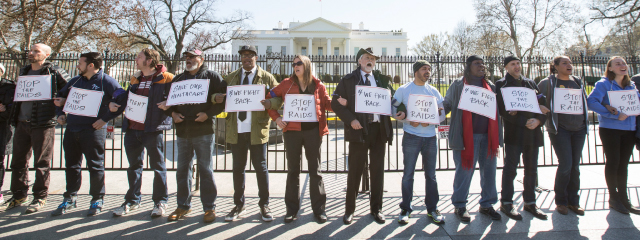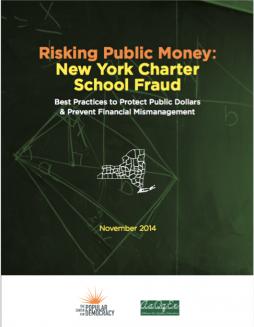Risking Public Money: New York Charter School Fraud
Summary
Executive Summary
Sixteen years following the passage of New York’s Charter School Act, the number of charter schools in New York has grown dramatically. Over the last 10 years, charter student enrollment has increased by 530 percent. Charter schools enroll over 90,000 students in New York State,2 80,000 of whom attend charter schools in New York City.3 For the school year 2014–15, New York charter schools will receive over $1.5 billion in public funding.
Despite the tremendous investment of public dollars, New York has failed to implement a system that adequately monitors charters for fraud, waste, and mismanagement. While charter schools are subject to significant reporting requirements and monitoring by oversight bodies, only the New York State Comptroller’s Office (Office) audits charter schools with any regularity. While the Office has audited fewer than half of all charter schools, they have exposed some form of internal control deficiency or mismanagement in 95 percent of their audits.5 The majority of charter schools in New York are left to operate year in and year out without regulator-level audits, specifically audits that are designed to determine whether these publicly funded, privately managed schools are spending public dollars properly. Given the findings of the limited audits the State Comptroller has performed, this system of irregular regulator audits poses a serious problem. In all but three of the Comptroller audits, auditors exposed internal control deficiencies and various forms of mismanagement ranging in severity and form—from inappropriate trips to the Bahamas by charter school staff to undocumented spending of thousands of public dollars.
These findings indicate that many of the unaudited charter schools likely suffer from internal control deficiencies as well. Based on conservative estimates, New York could stand to lose $54 million in charter school fraud in 2014 alone.* The vast majority of this fraud will go undetected because New York lacks the oversight necessary to detect it. In this report we identify two fundamental flaws with New York’s oversight of charter schools:
- Oversight depends heavily on self-reporting by charter schools or the reports of whistleblowers. New York’s oversight agencies rely almost entirely on audits paid for by charter operators and complaints from whistleblowers. While important to uncover fraud, neither method systematically detects or effectively prevents fraud.
- General auditing techniques alone do not uncover fraud. The audits commissioned by the charter schools use general auditing techniques designed to expose inaccuracies or inefficiencies. Without audits specifically designed to detect and uncover fraud, however, state and local agencies will rarely detect deliberate fraud without a whistleblower.
To address these serious deficiencies in New York’s system, we recommend the following reforms:
Mandate New Measures Designed to Detect and Prevent Fraud
- Charter school governing boards should be required to institute an internal fraud risk management program, including an annual fraud risk assessment.
- Charter school governing boards should be required to commission an annual audit of internal controls over financial reporting that is integrated with the audit of financial statements charter schools currently commission.
- Oversight agencies, including the Comptrollers’ offices for New York State and City, should conduct audits on charter schools once every five years.
- Oversight agencies should conduct fraud audits, prioritizing charter schools with heightened levels of fraud risk.
- Auditing teams should include members certified in financial forensics trained to detect fraud.
Increase Transparency & Accountability
- Oversight agencies should create a system to categorize and rank charter audits by level of fraud risk they pose to facilitate public engagement.
- State and City Comptrollers should create a dedicated charter school fraud hotline for whistleblowers.
- Charter school governing boards should post the findings of their annual fraud risk internal assessments on their websites.
- Oversight agencies should determine what steps the nonprofit governing boards and executives of charter schools have taken to guard against fraud over the past 10 years and issue a report to the public detailing their findings and recommendations.
- Charter school authorizers should take fraud risk assessments into account when evaluating whether to renew a school’s charter.
- Charter school governing boards should provide parents of students enrolled in charter schools free access to all materials related to their fraud risk management program.
- The state should impose a moratorium on new charter schools and refrain from increasing the charter school cap until the state oversight system is adequately reformed.
Given the rapid and continuing expansion of the charter school industry and the tremendous investment of public dollars, New York must act now to reform its oversight system. Without reform, the people of New York State stand to lose millions of dollars to charter school fraud, waste, and mismanagement.













